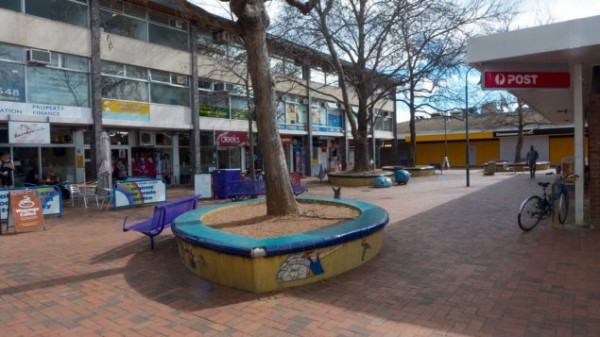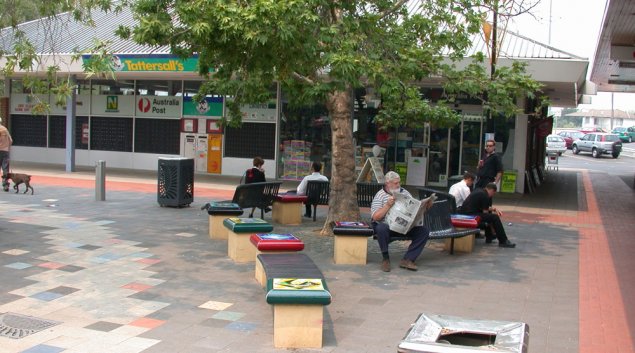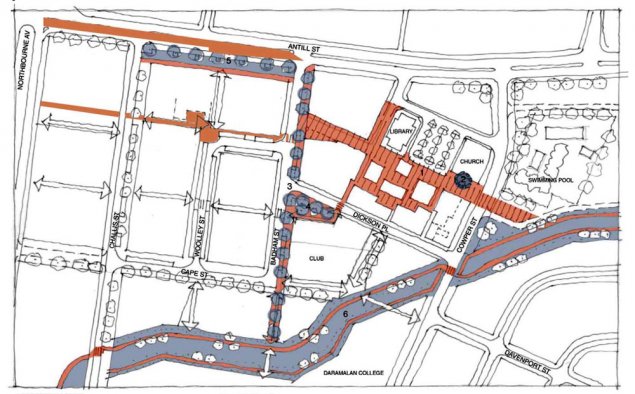
A study of the ACT’s master planning processes reveals thorough research and consultations to produce a range of comprehensive documents on options for many of Canberra’s established shopping centres.
Despite all this seemingly good work, many Canberra residents feel disenfranchised by the planning system and have little respect for our planning and development bureaucrats. What’s the problem?
In an ideal world (it’s out there somewhere), master planning allows for community engagement on all options for particular precincts. It should allow aspirations and ideas to be discussed in an open and transparent forum. People understand that all of their dreams may not be realised but that a good master plan provides a broad outline of what could be achieved.
 Here’s a typical announcement, in this case used for the current master plan underway for the Curtin shops:
Here’s a typical announcement, in this case used for the current master plan underway for the Curtin shops:
“The ACT Government is preparing a master plan for the Curtin group centre to explore options to improve existing public spaces, diversify housing options and make the centre more accessible for all.”
There are several of these shopping centres currently subject to a master plan process, such as Dickson, Weston and Mawson—as well as others sites including Yarralumla next to the Brickworks.

I have attended several forums on developments and master plans over recent years (a sad statement on my lifestyle maybe!) and along with many residents have spotted the common threads to the way the government goes about these undertakings.
Too often these master plan exercises are smoke and mirrors designed to gather notional community agreements for the sale of public land and the subsequent development of residential apartments and/or more supermarkets.
As in the above statement about the Curtin shops, in reality these consultations have little to do with a revamp of the current building stock as they are now all owned by finance and/or development companies. These companies are collecting rents while waiting for the rules to change to allow them to build high-rise within these centres.

There was a revealing incident when the Dickson master plan was in its early stages. A local was in a bank queue and overheard a developer on his phone encouraging developers from Canberra and elsewhere to attend the next master plan meeting to ensure that the residents did not have the majority say.
Another incident was when people showed up in large numbers in good faith to commence a consultation process about options for the community site known as Section 72 Dickson, or as we like to call it, the Dickson cultural parklands. The agenda became clear when the chief bureaucrat for the night introduced himself as being from the housing branch of government.
The first question was whether his presence was a clear signal that the government had commenced these consultations on the basis that the site was to have new residential apartments built on it. His answer was evasive and the subsequent meetings made it clear that while the community was looking for community facilities, this was not the main game of the government.
There are many more instances where the government’s agenda has been about opportunistic land sales and to encourage apartment development in precincts not previously designated for residential development.
Most residents have a clear understanding of how government budgets are structured: that we need to have an increasing amount of income to try to match the ever-increasing call for expenditures. And most would understand the need to sell selected sites until other forms of revenue raising can be identified.
The experience of residents is that agencies approach these master plan exercises and other consultations dishonestly. Again I say, some of the documentation is of a high calibre and is very convincing. The master plan processes while looking sort of friendly are more often the means of plonking into the inner suburbs far bigger and uglier developments than anyone could have imagined.
The ACT politicians need to adopt a mature rather than underhand approach to how they engage with residents on planning and development of this wonderful city. ACT politicians are yet to display any grasp of the benefits of real and open community engagement and to move away from the current perceived understanding that the Canberra community are all nut jobs.
If all cards were put on the table and open and transparent conversations were had with residents, residents would most likely work with the government to see the best outcomes on all levels: being about government finances, community amenity, redevelopments to have more people reside in the inner suburbs, climate change adaptation, as well as redevelopments that enhance the health and well being of the community.
And developers would have certainty and could have avoided such disasters, as in Dickson, whereby the developers spent heaps on their supermarket proposals and have had to dump all that and engaged new architects to come up with something acceptable (hopefully).
The real question here is whether our politicians can bring about a change in culture within our planning and development agencies, or whether they need to install a new style of planning and development agency that would have equity, transparency and engagement with the community and business sectors as its reason for existence?
These issues should be addressed before the ACT elections later in 2016.
———————————————–
Paul Costigan